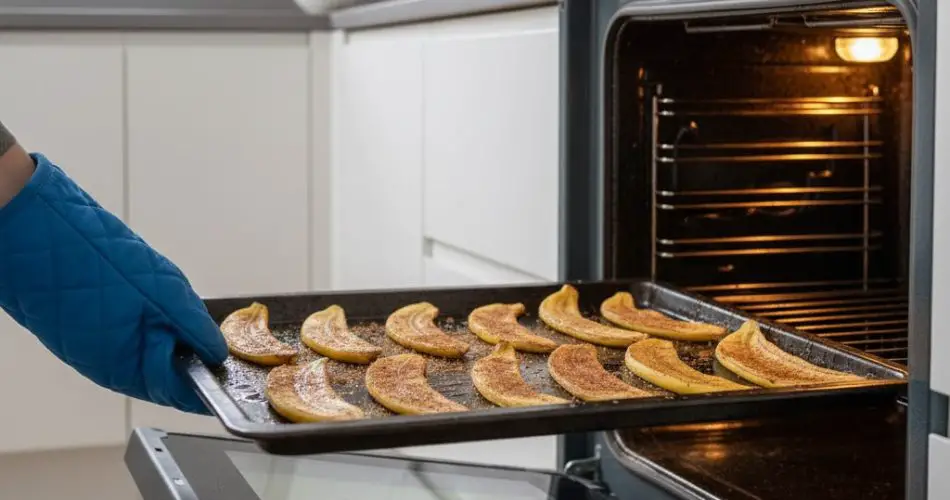If you usually throw away banana peels, it’s time to rethink that habit. These seemingly useless scraps can be transformed into a highly effective natural fertilizer that will revitalize your garden and support healthy, vigorous plant growth. Not only is this method eco-friendly, but it also allows you to save money on commercial fertilizers, making it an excellent solution for gardeners seeking sustainable practices.
Why Banana Peels Are Beneficial for Plants
Banana peels are rich in potassium and phosphorus, two essential nutrients for plant development. Potassium helps strengthen plant roots, improve flower and fruit production, and boost resistance to disease. Phosphorus, on the other hand, encourages robust root growth and overall plant health. When plants are deficient in these nutrients, their leaves may turn yellow, with edges that appear wilted or dry. Using banana peels as fertilizer addresses these deficiencies naturally, promoting healthy, lush growth.
Banana peels can be used in multiple ways, either as a liquid fertilizer or in dried, powdered form. Both methods are simple and effective, requiring minimal effort and no expensive chemicals.
Preparing a Banana Peel Fertilizer Infusion
One of the easiest ways to use banana peels is to make a banana peel tea or decoction. This liquid fertilizer can be applied directly to the soil around your plants. Here’s how:
-
Cut the peels into pieces: Start by chopping the banana peels into small sections.
-
Boil the peels: Place the pieces in a pot with water. Bring to a boil and let simmer for about an hour. If necessary, add a little more water during the cooking process to prevent the mixture from drying out.
-
Cool and strain: Once the boiling is complete, allow the liquid to cool. Strain the mixture through a fine sieve to remove any solid residues.
-
Apply to plants: Pour the cooled liquid directly onto the soil around the roots of your plants. This infusion provides essential nutrients and encourages healthy growth.
This method is particularly suitable for potted plants, vegetable gardens, and flowering plants. It delivers nutrients quickly, and because it is entirely natural, it’s safe for all types of plants, including edible crops.
Drying Banana Peels for Long-Term Fertilizer Use
If you want a fertilizer that can be stored and used whenever needed, drying banana peels is an excellent option. There are two main methods for drying banana peels:
Sun-Drying Method
-
Prepare the peels: Remove the peels from the bananas and clean them thoroughly.
-
Expose to sunlight: Lay the peels on a clean surface, such as a tray or cloth, and leave them under direct sunlight for about three days.
-
Check for dryness: The peels should become brittle and dry. This natural method relies entirely on solar heat, making it an eco-friendly and energy-free option.
Sun-drying works best during warm, sunny weather. However, it may be impractical during colder months or in regions with limited sunlight.
Oven-Drying Method
For a faster and more controlled approach, you can use your oven:
-
Preheat the oven: Set your oven to 100°C (212°F).
-
Arrange the peels: Lay the banana peels flat on a baking tray lined with parchment paper.
-
Dry slowly: Place the tray in the oven and allow the peels to dry for approximately eight hours. Check occasionally to ensure they do not burn.
-
Cool and process: Once dried, allow the peels to cool completely. Then, grind them into a fine powder using a blender or food processor.
Although the oven-drying method takes longer than some expect, it ensures consistently dry peels that can be stored and used as fertilizer whenever necessary.
How to Use Dried Banana Peel Powder
Using powdered banana peels as fertilizer is straightforward:
-
Apply to soil: Sprinkle the banana peel powder around the base of your plants or directly on the soil.
-
Water thoroughly: After applying, water the plants generously to help the nutrients penetrate the soil and reach the roots.
-
Repeat as needed: The dried peel powder can be stored in a jar for later use. Apply it whenever your plants show signs of nutrient deficiency or as part of a regular fertilization schedule.
The powder releases nutrients slowly over time, feeding your plants gradually and ensuring sustained growth.
Additional Benefits of Banana Peel Fertilizer
Using banana peels as a natural fertilizer offers several advantages:
-
Cost-effective: No need to spend money on chemical fertilizers.
-
Eco-friendly: Reduces food waste and provides a sustainable alternative to synthetic products.
-
Safe for edible plants: Completely natural, making it ideal for vegetable gardens and fruit-bearing plants.
-
Easy to prepare and store: Both the liquid infusion and dried powder methods are simple and can be stored for later use.
Signs Your Plants Need Banana Peel Fertilizer
Before applying banana peel fertilizer, observe your plants for common nutrient deficiency symptoms:
-
Yellowing leaves, especially around the edges
-
Slow or stunted growth
-
Weak stems or roots
-
Reduced flowering or fruit production
Applying banana peel fertilizer can help correct these deficiencies naturally, promoting healthy leaves, stronger stems, and overall robust plant growth.
Conclusion
Banana peels are no longer just waste—they are a powerful, natural fertilizer that can support your garden and houseplants. Whether used as a nutrient-rich liquid infusion or ground into a dried powder, banana peels provide essential potassium and phosphorus to keep plants thriving. By incorporating this simple, eco-friendly method into your gardening routine, you’ll reduce waste, save money, and promote lush, healthy plants.
Next time you enjoy a banana, remember that the peel isn’t trash—it’s a natural gift for your garden, ready to boost growth, enhance soil, and contribute to a greener, healthier environment.



